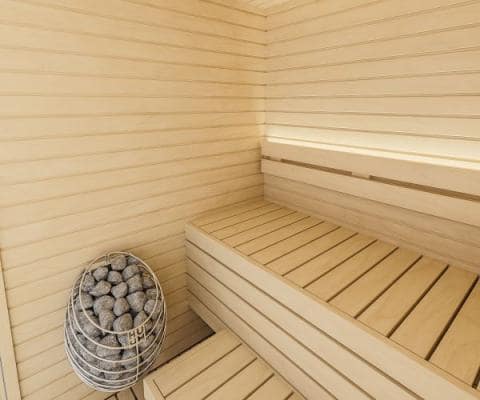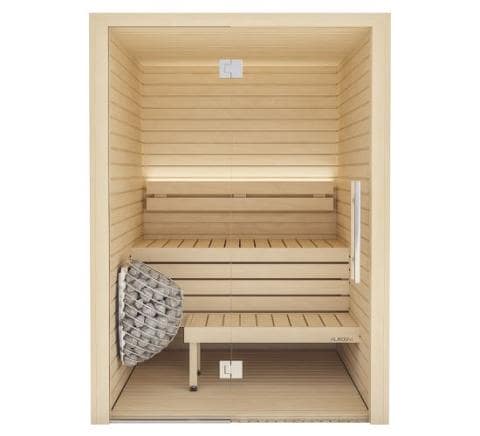9 Easy Facts About Traditional Sauna Shown
9 Easy Facts About Traditional Sauna Shown
Blog Article
Getting My Traditional Sauna To Work
Table of ContentsExamine This Report about Traditional SaunaSome Ideas on Traditional Sauna You Should KnowOur Traditional Sauna PDFsThe Ultimate Guide To Traditional SaunaHow Traditional Sauna can Save You Time, Stress, and Money.
A lot of the weight shed in a sauna is water loss and is re-gained upon rehydrating. Without an uncertainty sauna can be an essential part of a healthy weight loss program. To take a look at the distinctions between conventional and IR saunas, I will separate these into proven, theoretical, and produced distinctions.Hence, the hottest point in the saunawhich goes to the ceiling straight over the sauna heateris commonly in between 185 and 190 F. Claims that a typical sauna goes beyond 200 F is just not true and not applicable for electric saunas offered in the US. The temperature level for a far-infrared sauna is typically established between 120 and 140 F; however, unlike the standard sauna, the objective in and IR area is not to accomplish a heat.
Due to the fact that of this, the temperature difference is nearly unnecessary, given that extreme sweating leads to both sauna types, but the technique of heating up the body is different. In an IR sauna the bather will feel warm and will sweat a lot, yet at a lot lower temperature levels. Traditional Sauna. Thus, if the objective is to spend longer time periods in the sauna, the IR sauna is a great choice

Unknown Facts About Traditional Sauna

When the high temperature level is accomplished, the components cycle on and off to maintain the heat. Traditional Sauna. Most traditional sauna customers appreciate putting water over the rocks to create vapor to elevate sauna moisture degrees. The advantages of putting water over the rocks include: making the room a lot more comfy, dampening the nasal passages, and permitting the usage of aromatherapy by mixing necessary oils with the water
In a far-infrared sauna, the heat waves pass through the body to properly heat the body and raise the body core temperature. To achieve this raised temperature level, Far-infrared emitters develop infrared power which is close to the exact same wavelength as that which the body normally navigate to this site emitsoften referred to as the "Essential Range" of 7 to 14 microns), so the power is well obtained by the body.
When the energy goes into the body, it causes the body temperature level to boost and inevitably causes sweat. In an infrared sauna it's crucial for the emitters/heaters to remain on almost continuously. Given that there is no mass of rocks to maintain warmth, the sauna will certainly cool if the emitters shut down.
More About Traditional Sauna
As mentioned over, the sauna bather in an infrared area desires to place himself before operating emitters to get maximum gain from the heat. The heating time for both spaces can be really various, relying on exactly how the spaces are used. For a conventional sauna, a bather must allow 30-40 mins for the space to attain a wanted the original source temperature level and to properly pre-heat the rocks.
A well built sauna will usually accomplish a temperature level of 150-160 F in regarding 30-40 minutes. For hotter temperatures, the space may require to warmth for a longer duration.

Traditional saunas tend to be bigger (for this reason use more electrical power) than infrared saunas, although conventional saunas are absolutely readily available in one and two individual sizes. For a two-person conventional sauna, 5x6 click site or 5x7 dimension is most popular. The leading bench can easily seat two or three individuals and is likewise enough time to rest throughout the sauna session.
The smart Trick of Traditional Sauna That Nobody is Discussing
The average expense per kWH of electrical energy in the U.S. is around $0.11 - Traditional Sauna, so a 4.5 kW heater will cost roughly $.50 to run for one hour, if the heating unit runs continually for one hour. Usually a sauna heater will run for 75% of the very first hour and 50% of succeeding hours on since the elements cycle once the established temperature is achieved
A two person far-infrared room is usually literally smaller sized than a typical sauna, typically about 4' x 4' or smaller. The IR home heating system is typically 1.5-1.7 kW using a 120 volt 15 amp plug-in solution. Given that the area can be made use of faster than a sauna space, we will certainly think the room is made use of for to of an hour including warm up time.
Lastly, there is a seldom reviewed difference in the social experience in between both spaces. While our culture has lost some of the social benefit of the standard sauna experience, it can be very socially rewarding. From family members time in the sauna, to heart-felt discussions with considerable others, to sauna partiesthe conventional sauna experience can result in intimate socializing.
Traditional Sauna Fundamentals Explained
Most higher end infrared areas include colored light treatment, noise systems and full-glass fronts.
Report this page